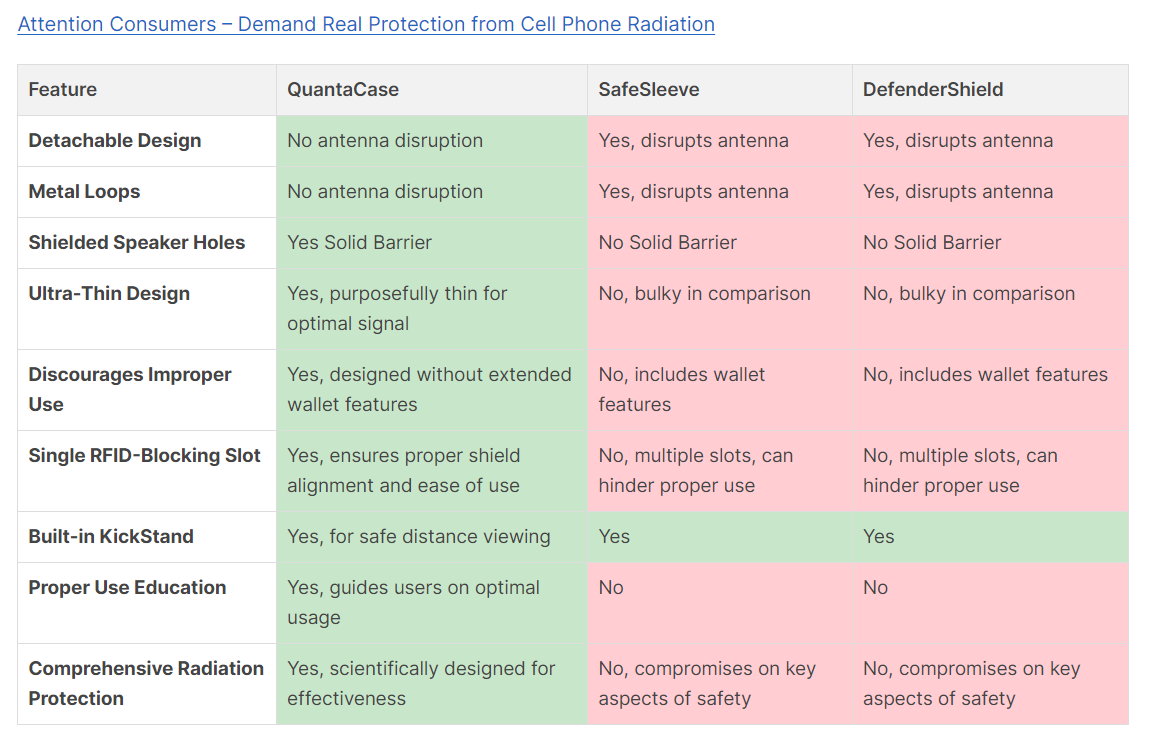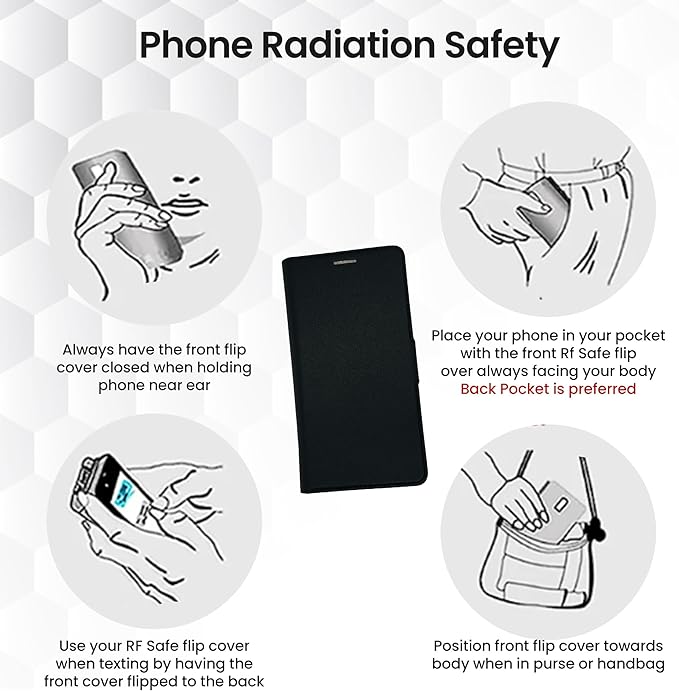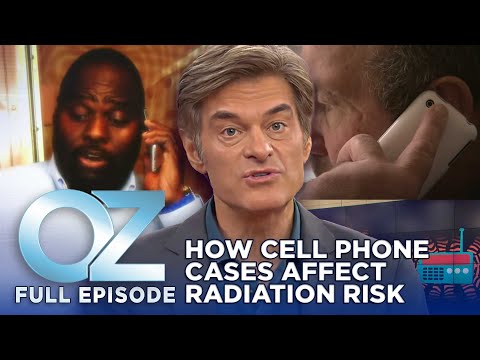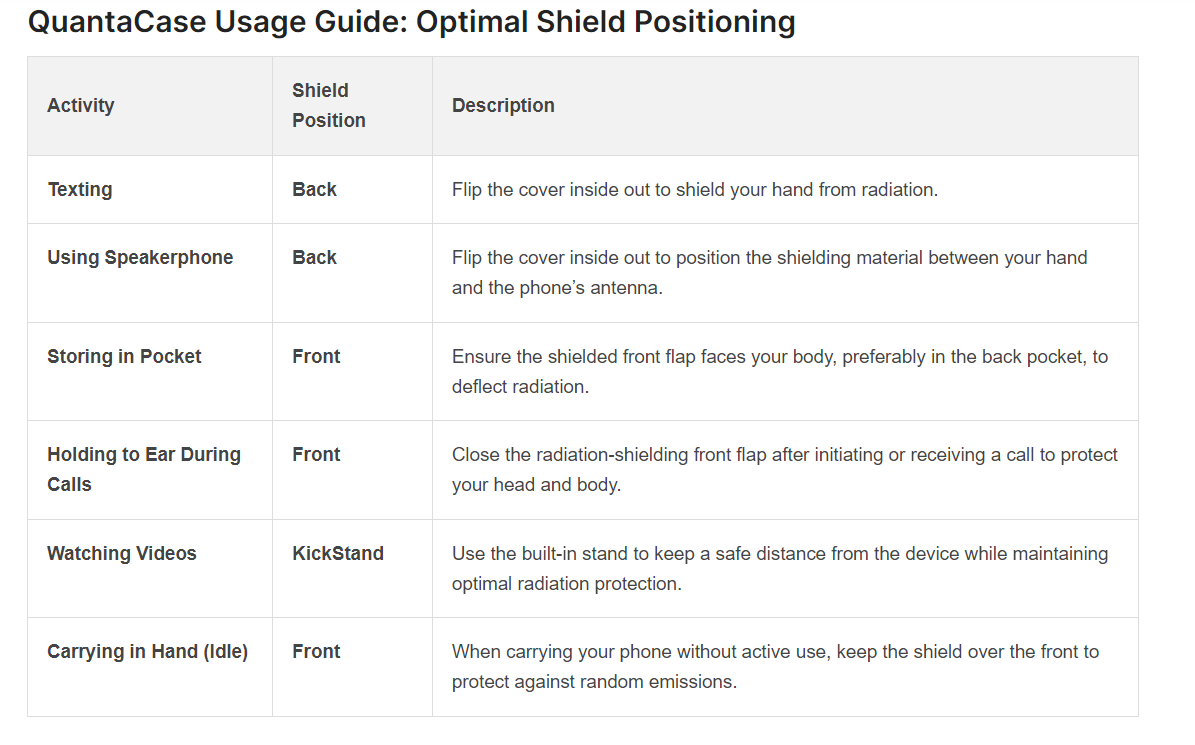
In an era where smartphones are indispensable, it’s crucial for consumers to understand the potential risks associated with their use, particularly regarding radiation exposure. This awareness is vital in light of recent developments and findings, such as those highlighted by Dr. Oz, the Environmental Working Group (EWG), and the Environmental Health Trust (EHT).
Dr. Oz’s Findings on Cell Phone Radiation
Dr. Oz’s episode, “Does Your Cell Phone Case Increase Your Radiation Risk?” emphasizes the critical role of proper cell phone case design in mitigating radiation exposure. His investigation revealed several key points:
Proximity Matters:
- Keeping a phone just 1 inch away from the head reduces radiation exposure to 15%: This finding highlights the exponential drop in radiation exposure with just a small increase in distance. By maintaining even a slight separation between the phone and the head, users can significantly reduce their exposure to potentially harmful radiation.
- At 3 inches, exposure drops to just 5%: Further increasing the distance amplifies the reduction in radiation exposure, emphasizing the importance of not holding the phone directly against the head during calls.
Cell Phone Case Design:
- Poorly designed cases, such as flexible plastic ones, can increase radiation exposure by up to 16%: Cases that obstruct the phone’s antenna can cause the phone to work harder to maintain a signal, thereby increasing radiation emissions.
- Properly designed cases, which avoid obstructing the phone’s antenna, can reduce exposure: Choosing cases that are designed with radiation protection in mind can help mitigate these risks, ensuring that the phone does not emit unnecessary levels of radiation.
Guidelines for Safe Use:
- Dr. Oz recommends using hands-free options and keeping phones away from the body to minimize radiation exposure: Hands-free devices like earphones or speaker mode can help maintain a safer distance between the phone and the body.
- Choosing cases that do not obstruct the phone’s antenna is crucial to prevent increased radiation: Proper case design is essential to avoid inadvertently increasing radiation exposure.
EWG’s Analysis on Cell Phone Cases
The Environmental Working Group (EWG) supports these findings with their own research, emphasizing the importance of proper case design and regulatory updates:
Design Flaws and Radiation:
- EWG found that some cases can block the phone’s antenna, forcing it to emit more radiation: This results from the phone working harder to maintain a signal, thereby increasing radiation emissions.
- Their analysis showed that some cases increased the Specific Absorption Rate (SAR) by 20 to 70 percent: This substantial increase in SAR values underscores the potential danger of using poorly designed phone cases.
Need for Updated Testing Guidelines:
- EWG has called on the FCC to update its testing guidelines to account for the impact of smartphone cases: Current guidelines do not consider the additional radiation exposure caused by cases, highlighting a significant gap in consumer protection.
- This action is critical to ensure consumers are not exposed to higher radiation levels due to poorly designed cases: Updated regulations would help protect consumers from unnecessary radiation exposure by ensuring that all aspects of phone use, including cases, are considered in safety standards.
Historic Court Ruling Against the FCC
A landmark ruling by the United States Court of Appeals for the District of Columbia Circuit in August 2021 underscores the importance of these findings. The court found that the FCC had failed to address evidence showing that RF radiation at levels below current limits could cause health effects. Key points from the ruling include:
FCC’s Failure to Update Guidelines:
- The court ruled that the FCC’s decision to retain its 1996 safety limits was “arbitrary and capricious”: The court found that the FCC did not adequately consider new scientific evidence or public comments when it decided to maintain outdated exposure limits.
- The FCC ignored evidence on the health impacts of long-term wireless exposure and the risks to children: This oversight includes significant research indicating potential health risks, especially for vulnerable populations like children.
Implications for Public Health:
- The court ordered the FCC to provide a reasoned explanation for its testing procedures: The FCC must now reassess its guidelines and provide clear justifications for its decisions.
- The FCC must address the impacts of RF radiation on children, the environment, and long-term exposure: This includes reviewing the latest scientific evidence and considering the broader implications of RF radiation exposure.
The NTP’s Abrupt Halt of Research
Consumers should also be aware of the National Toxicology Program’s (NTP) sudden decision to halt research on the biological and environmental impacts of cell phone radiation. Despite finding clear evidence of cancer, heart damage, and DNA damage in their $30 million animal studies, the NTP ended further research due to cost and technical challenges. This decision leaves a significant gap in understanding the full extent of radiation risks.
Key Points from Devra Davis’s Article:
Critical Findings Ignored:
- The NTP’s studies found clear evidence of cancer and DNA damage from cell phone radiation: Despite these alarming findings, further research was abruptly halted, raising questions about the commitment to public health.
- Despite these findings, research was abruptly halted, raising concerns about governmental responsibility: The decision to end research leaves many questions unanswered and highlights the need for continued investigation.
Ongoing Research Needs:
- The decision contrasts sharply with ongoing studies in the European Union and other regions: Other countries are continuing to invest in research to understand and mitigate the risks associated with wireless radiation.
- The halt in research is a significant setback in understanding the impacts of wireless radiation: Without continued research, it is difficult to fully grasp the long-term health implications of cell phone use.
Consumer Vigilance:
- Given the lack of updated guidelines and ongoing research, consumers must make educated decisions about their phone use: Consumers cannot rely solely on outdated regulations and must stay informed about the latest research and safety recommendations.
- Understanding the risks and choosing protective measures, such as proper phone cases, is essential for minimizing exposure: By selecting well-designed cases and adopting safe usage practices, consumers can reduce their radiation exposure.
The RF Safe QuantaCase: A Solution Backed by Science



The findings from Dr. Oz’s episode validate the design philosophy behind the RF Safe QuantaCase, emphasizing the importance of every feature aimed at reducing radiation exposure:
- Shielded Speaker Hole: Unlike many cases, the QuantaCase includes a shielded speaker hole, ensuring no gaps in protection.
- No Metal Carrying Strap Loops: Metal loops can create unpredictable radiation patterns. The QuantaCase avoids these entirely.
- Ultra-Thin Design: A thicker case can interfere with the phone’s antenna, increasing radiation. The QuantaCase’s sleek, non-detachable design ensures optimal signal strength while minimizing radiation.
- Avoidance of Wallet Features: Wallet features can discourage proper use during calls or while texting, increasing exposure. The QuantaCase’s design keeps the phone’s shielding effective without adding unnecessary bulk.

Conclusion
The cumulative evidence from Dr. Oz, EWG, and the historic court ruling against the FCC underscores the importance of consumer awareness in mitigating cell phone radiation risks. With government research halted and outdated safety guidelines still in place, consumers must take proactive steps to protect themselves. This includes using well-designed phone cases that minimize radiation exposure and staying informed about the latest scientific findings.
Call to Action
Consumers are encouraged to stay informed, use protective measures, and advocate for updated safety regulations to ensure their health and well-being in the digital age.









